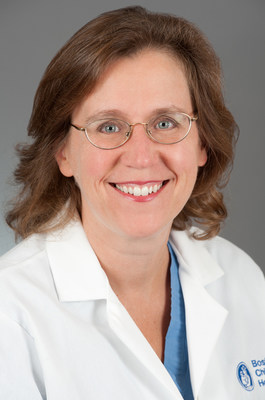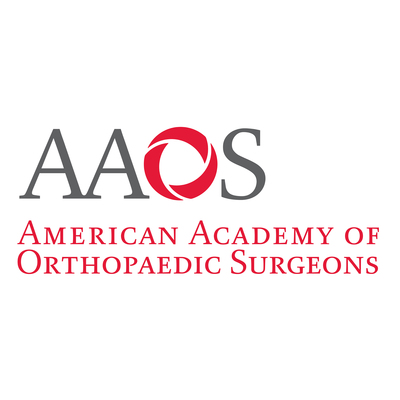Subjects: AWD, NPT, FDA
Martha Murray, MD, FAAOS, presented with 2022 OREF Clinical Research Award for studies leading to FDA approval of first implant to stimulate ACL healing
ROSEMONT, Ill., Jan. 31, 2022 /PRNewswire/ --The 2022 Orthopaedic Research and Education Foundation (OREF) Clinical Research Award was presented to Martha Murray, MD, FAAOS, and her collaborators for outstanding clinical research related to musculoskeletal disease or injury. Dr. Murray and her colleagues studied techniques to restore the anterior cruciate ligament (ACL) after a tear, leading to the U.S. Food and Drug Administration (FDA) De Novo 510(k) approval in December 2020 of the bridge-enhanced ACL restoration (BEAR) implant, the first implant to stimulate ACL healing. The research team previously won the Kappa Delta Ann Doner Vaughn Award in 2013 for the preclinical work leading to the proof of concept of the BEAR implant.
ACL injuries are one of the most common knee injuries, with approximately 200,000 ACL reconstructions taking place every year in the United States. ACL reconstruction is the gold standard of care in which the torn ACL is removed and replaced with either a graft from another part of the leg (autograft) or a deceased donor (allograft). However, there are many drawbacks. The procedure can be very invasive, may not restore joint motion and is unlikely to prevent the premature development of post traumatic osteoarthritis (PTOA). Many patients also are unable to return to the same level of activity following ACL reconstruction.
"Our hypothesis was that restoring, rather than replacing the ACL, would have some inherent advantages, including keeping the muscles and tendons around the knee intact, leading to less pain and weakness," said Dr. Murray, orthopedic surgeon-in-chief, Orthopedic Center, Boston Children's Hospital and professor of orthopedic surgery, Harvard Medical School. "However, all of those advantages would not be enough if the knee wasn't stable, or the knee didn't feel right to the patient with the BEAR implant as compared to the current gold standard."
The BEAR Implant: How it Works
In most tissue injuries, such as the medial collateral ligament (MCL), blood pools and clots in the tear site, connecting the two ligament ends. Tissue can then grow into that provisional scaffold and heal the injury. However, this doesn't happen in ACL injuries. When an ACL is injured, a blood clot doesn't form at the injury site, most likely due to synovial fluid (a thick liquid found within the joint) washing out the clot. The researchers determined the absence of the provisional scaffold in the ACL was the key reason it fails to heal.
Working with her colleagues, Dr. Murray utilized an extracellular matrix (ECM; structural support cells that regulate cellular growth) material that could be manufactured into a porous implant that serves as a substitute scaffold and absorbs and holds the blood in the ACL tear site. The BEAR implant is secured by a suture to connect the ends of the torn ACL and then saturated with the patient's blood to allow a clot to form and eventually reunite the ligament.
Moving to Human Trials
After demonstrating the biomechanical outcomes were equivalent to that of ACL reconstruction in preclinical trials, the first human clinical trial was set up to evaluate patient safety.
Two 10-patient cohorts were established with initial follow up after surgery at three months to assess infection rates, inflammation requiring medical intervention, re-operation, and other adverse events. This follow-up time was chosen as some other ECM-based products used in different joints resulted in high rates of rejection and early removal. Patients with a complete, midsubstance ACL tear received either the BEAR implant or autograft ACL reconstruction. At the three-month mark, no patients had joint infections or signs of significant inflammation. Both groups had similar pain scores, knee swelling and opioid pain medication requirements. No BEAR implants needed to be removed and no arthrofibrosis (a fibrotic joint disorder) was seen in the BEAR implant group. Hamstring strength was significantly better in the BEAR implant group.
At the two-year mark, there were no failures in either group. BEAR implant patients reported an average score of 92 and graft patients reported an average score of 85 on the International Knee Documentation Committee (IKDC) subjective scores, a patient-reported outcome measure. Hamstring strength remained higher in the BEAR implant group compared to the ACL reconstruction group. Two years post-operative, the study showed that the BEAR implant produced equivalent or better outcomes to ACL reconstruction and that further research could continue.
BEAR II Trial Leads to FDA Approval
In a randomized, controlled trial of 100 patients (median age 17 years) with a complete ACL tear, 65 patients were randomized to the BEAR implant group and 35 patients to the control group to receive an autograft ACL reconstruction. All patients received physical therapy and were followed for two years.
Two years post-operative, 99% of the patients were able to be assessed for follow up. Both patient groups had similar IKDC scores (average of 89 for BEAR implant patients, and average of 85 for ACL reconstruction patients). Arthrometer testing, which measures the difference in laxity (looseness of the knee) between the healthy and injured leg, showed comparable AP laxity between the two techniques. Patients who had the BEAR implant had significantly higher mean hamstring muscle strength indices than the patients in the ACL reconstruction group.
High reinjury rates in active adolescents are an issue following ACL reconstruction, with revisions rates ranging from 10-28%. For adolescents who undergo a simple suture repair, the risk for reinjury is even higher at almost 50% after three years.i The BEAR implant group had a revision rate of 14%, which is lower than the suture repair rate, and similar to ACL reconstruction rates.
"The study showed that the hamstring strength in patients was significantly better, which is very important to patients," said Dr. Murray. "Any time you take a graft from another part of the body, that graft site can be painful and then the knee still doesn't feel quite right. With the BEAR implant, patients felt their knee return to normal more quickly. By doing a double-blinded, randomized controlled trial, orthopaedic surgeons now have a better understanding of the outcomes they can expect for their patients. These data will help surgeons and patients make an informed decision on what procedure is right for them."
About the OREF Clinical Research Award
The OREF Clinical Research Award was established in 1995 to recognize outstanding clinical research related directly to musculoskeletal disease or injury. All submitted manuscripts are reviewed, graded, and selected by the AAOS Research Development Committee. The award provides $20,000 to recipients. For more information about the manuscript submission process, please visit aaos.org/kappadelta.
About the OREF
The Orthopaedic Research and Education Foundation (OREF) is an independent, 501(c)3 non-profit organization that raises funds to support research on diseases and injuries of bones, nerves and muscles and to enhance clinical care leading to improved health, increased activity and a better quality of life for patients. To further its mission, OREF is committed to exploring ways to partner with others to move the field of musculoskeletal research forward. For more information, visit www.oref.org and follow us on Twitter.
About the AAOS
With more than 39,000 members, the American Academy of Orthopaedic Surgeons is the world's largest medical association of musculoskeletal specialists. The AAOS is the trusted leader in advancing musculoskeletal health. It provides the highest quality, most comprehensive education to help orthopaedic surgeons and allied health professionals at every career level best treat patients in their daily practices. The AAOS is the source for information on bone and joint conditions, treatments, and related musculoskeletal health care issues and it leads the health care discussion on advancing quality.
Follow the AAOS on Facebook, Twitter, LinkedIn, and Instagram.
Disclosures
Funding
- Funding was received from the Translational Research Program at Boston Children's Hospital, the Boston Children's Hospital Orthopaedic Surgery Foundation, the Boston Children's Hospital Sports Medicine Foundation, and the NFLPA through the Harvard Catalyst's Football Players Health Study.
- Funding was received from the Orthopaedic Research and Education Foundation (05-022) for "Enhanced Anterior Cruciate Ligament Repair Using Collagen-PRP Scaffolds."
- Funding for the pre-clinical work was received from the NIH and the National Institute of Arthritis and Musculoskeletal and Skin Diseases (R01-AR065462 and R01-AR056834)
Conflicts of Interest
- Drs. Murray, Fleming and Proffen and Boston Children's Hospital have equity interests in MIACH Orthopaedics, a company that has licensed the BEAR implant technology from Boston Children's Hospital.
- Drs. Murray and Fleming also receive royalties from Springer Publishing and research grants from the NIH, Department of Defense, and NFLPA through the Harvard Football Players Health Study.
- Drs. Murray and Proffen have also received funding for consulting for MIACH Orthopaedics.
iGagliardi AG, Carry PM, Parikh HB, Traver JL, Howell DR, Albright JC. ACL Repair with Suture Ligament Augmentation Is Associated with a High Failure Rate Among Adolescent Patients. Am J Sports Med. 2019 Mar;47(3):560-566.
SOURCE American Academy of Orthopaedic Surgeons
These press releases may also interest you
|
News published on and distributed by:





